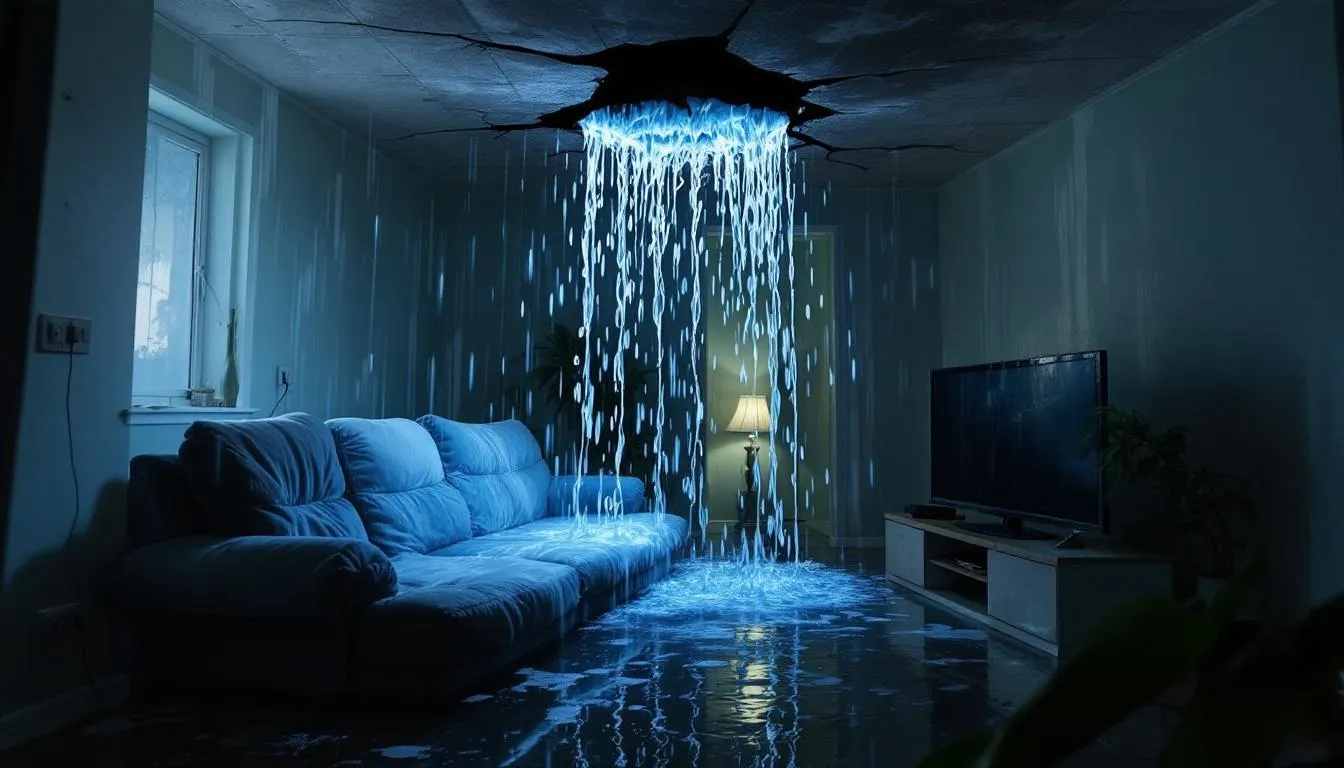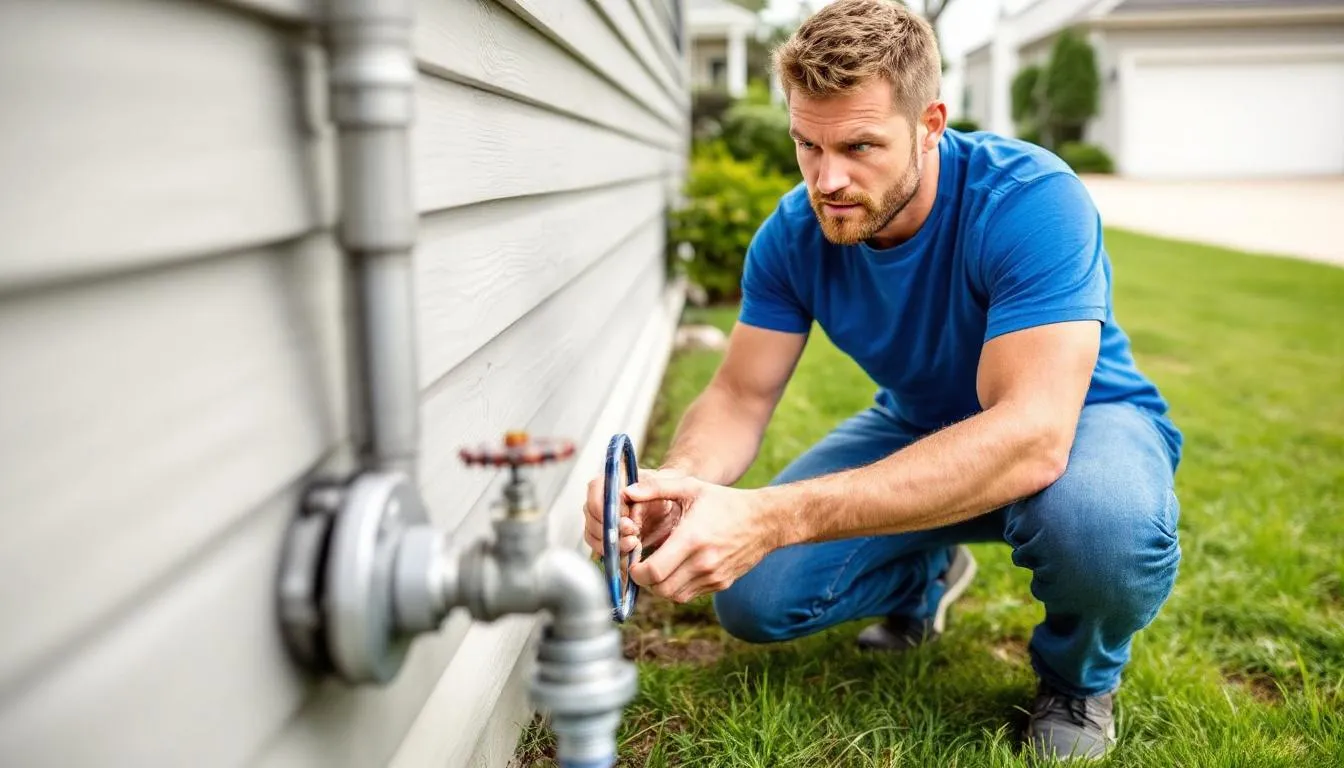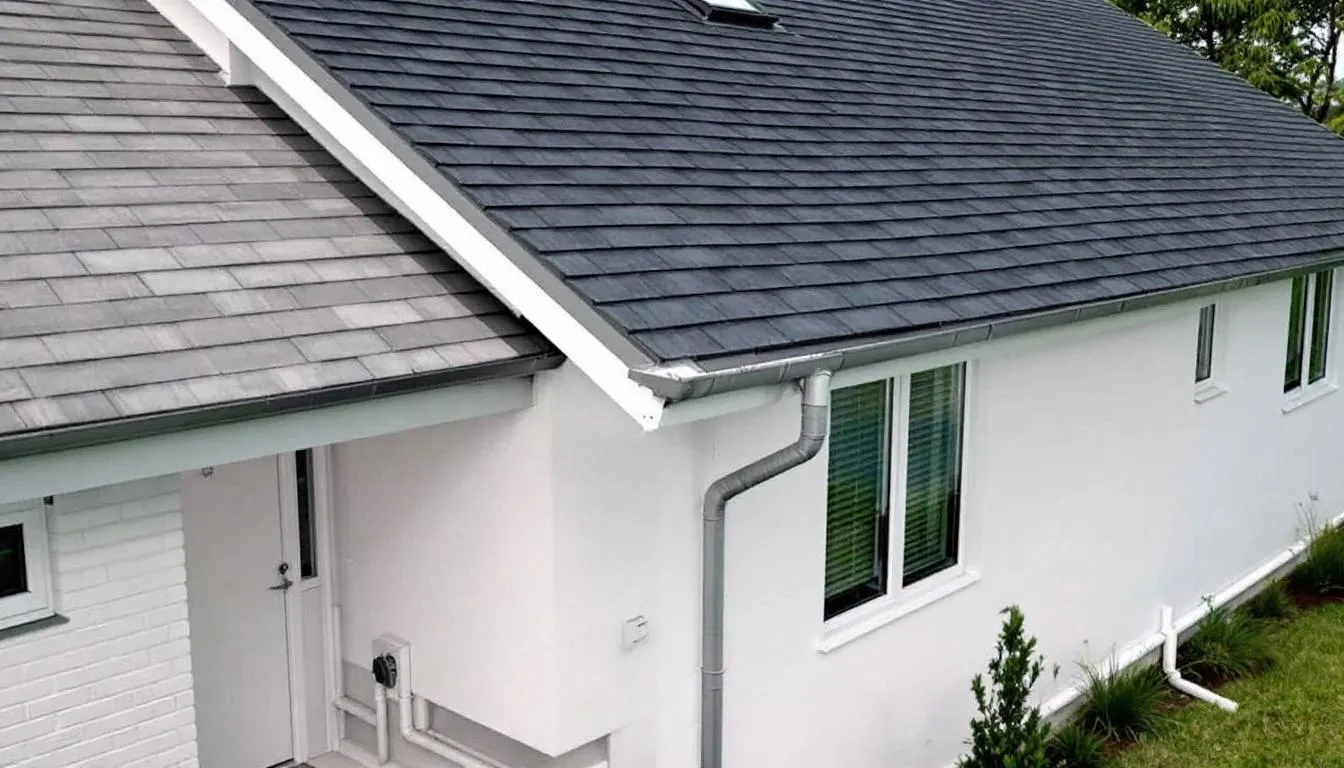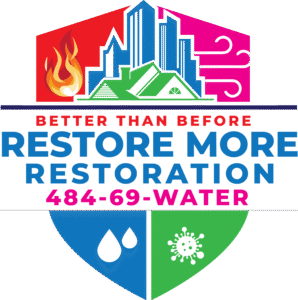Introduction: What is Water Damage and Why It Matters
Water damage represents one of the most destructive and costly threats to residential and commercial properties, affecting millions of homes annually and generating billions in repair costs across the United States. When water intrusion occurs where it shouldn’t, the resulting structural damage, mold growth, and health risks can escalate rapidly, transforming minor leaks into major disasters requiring extensive repairs.
This comprehensive guide covers the critical aspects of water damage that every property owner needs to understand: the three categories of water contamination, immediate response protocols that can save thousands in costly repairs, proven prevention strategies, and professional restoration processes. Whether you’re currently facing a water emergency, managing properties, or seeking to protect your investment through preventative measures, this guide provides the essential knowledge for effective water damage management.
Understanding water damage isn’t just about cleanup—it’s about protecting your family’s health, preserving structural integrity, and maintaining property value. With water damage accounting for nearly 40% of real estate insurance claims and average restoration costs reaching $12,500 per incident, addressing water damage promptly can mean the difference between minor repairs and catastrophic loss.

Understanding Water Damage: Key Concepts and Categories
Core Definitions and Water Classification
Water damage occurs when water infiltration causes destruction, deterioration, or undesirable changes to building materials, structural integrity, and indoor air quality. This broad definition encompasses everything from minor roof leaks creating water stains to burst pipes flooding entire floors, and each scenario requires different response strategies based on contamination level and affected materials.
The restoration industry classifies water damage into three distinct categories based on contamination level and potential health hazards:
Category 1 (Clean Water) originates from sanitary sources like burst pipe incidents, leaking roof sections, or malfunctioning appliances such as washing machines and air conditioners. While initially safe, clean water can quickly become contaminated and promote mold growth if not addressed promptly.
Category 2 (Gray Water) contains harmful microorganisms and chemicals, typically from household appliances like dishwashers, sump pump failures, or sink overflows. Gray or black water exposure can cause illness and requires professional disinfection during restoration.
Category 3 (Black Water) presents severe health risks due to sewage contamination, floodwaters from natural disasters, or standing water supporting bacterial growth. This category often results in complete loss of affected materials like carpeting and drywall, which cannot be salvaged safely.
Relationship Between Water Damage and Related Issues
Water intrusion creates a cascade of problems that extend far beyond initial moisture damage. The progression typically follows this pattern: water infiltration → material damage → excess moisture creation → mold and mildew development → potential health hazards and structural issues.
Moisture creates ideal environments for mold colonies to establish within 24-48 hours, particularly in damp environments with organic building materials. Prolonged exposure to moisture leads to wood rot, compromising structural integrity and potentially causing structural instability in severe cases.
Water damage also threatens electrical systems, creating fire hazards when moisture reaches electrical outlets or the breaker box. Short circuits and electrical malfunctions compound the immediate risks, while metal components suffer corrosion and deterioration over time.
The relationship between water damage and secondary problems includes:
- Mold growth in vulnerable areas within 48 hours
- Structural damage from water absorption in wood and drywall
- Health risks from contaminated water and mold spores
- Further damage to electronic devices and household appliances
- Fire hazards from compromised electrical systems
Why Water Damage is Critical for Property Owners
Water damage represents a significant financial threat, with industry data showing these incidents account for 23% of all homeowner insurance claims. The average water damage repair costs reach $12,500 per incident, though severe cases involving structural issues or extensive damage can exceed $50,000 in restoration expenses.
Beyond immediate repair costs, water damage impacts property value through visible signs like water stains, buckling floorboards, and musty odors that indicate underlying moisture problems. Properties with documented water damage history often face reduced marketability and lower appraisal values, making prevention and proper restoration critical for maintaining investment value.
Health implications provide another compelling reason for immediate action. Mold growth produces respiratory problems, particularly dangerous for children, elderly residents, and individuals with compromised immune systems. Black water exposure introduces pathogens causing serious illness, while prolonged exposure to moisture creates conditions supporting bacteria and allergen development.
The timing factor cannot be overstated—moisture levels above normal ranges allow mold to spread rapidly throughout affected areas. Research shows that addressing water damage promptly within the first 24-48 hours prevents mold growth and limits further deterioration of building materials, potentially saving thousands in additional restoration costs.
Water Damage Impact Comparison Table
Timeframe | Affected Materials | Repair Costs | Health Risks | Restoration Complexity |
|---|---|---|---|---|
24 Hours | Surface moisture, minor swelling | $1,200-$3,000 | Minimal if clean water | Simple drying, low complexity |
1 Week | Drywall damage, flooring issues | $5,000-$15,000 | Mold spores, respiratory irritation | Moderate: material replacement needed |
1 Month+ | Structural damage, electrical issues | $20,000-$50,000+ | Severe: mold colonies, bacterial growth | Complex: reconstruction, biohazard protocols |
Step-by-Step Water Damage Response Guide
Step 1: Immediate Safety and Source Control
Personal safety takes absolute priority when discovering water damage, especially with potential electrical hazards or sewage contamination. Before entering affected areas, shut off electricity at the breaker box if water has reached electrical outlets or if standing water covers flooring. Never enter areas with active electrical current and water contact.
Identify and stop the water source immediately to prevent further damage. Common culprits include burst pipes requiring main water shut-off, leaky pipes needing individual valve closure, or roof leaks requiring temporary tarping. For washing machines, air conditioners, or other malfunctioning appliances, disconnect power and water supply lines.
Document the initial damage with photographs before beginning any cleanup for insurance coverage purposes. Capture wide shots showing affected areas and close-ups of specific damage to building materials, electronic devices, and personal property. This documentation proves essential for claims processing and restoration planning.
Create an emergency contact list including:
- Insurance company claim numbers
- Certified water damage restoration professionals
- Utility company emergency lines
- Local emergency services if needed
Step 2: Professional Assessment and Water Extraction
Contact your insurance coverage provider within 24 hours to report the incident and understand policy coverage limits. Many policies cover sudden water damage but exclude gradual leaks or require separate flood insurance policy for natural disasters, making early communication critical for claims approval.
Professional water extraction using industrial equipment removes standing water more effectively than household methods. Certified technicians use truck-mounted pumps, commercial dehumidifiers, and moisture detection equipment to identify hidden water in wall cavities and subfloor areas where household tools cannot reach.
Professional assessment includes moisture mapping using thermal imaging and moisture meters to detect water infiltration behind walls, under flooring, and in structural cavities. This comprehensive evaluation prevents missed moisture pockets that could develop into mold colonies or cause further deterioration over time.
Key qualifications for restoration professionals include:
- IICRC (Institute of Inspection, Cleaning and Restoration Certification) credentials
- 24-hour emergency response capability
- Industrial water extraction and drying equipment
- Mold remediation certification for contaminated water situations
Step 3: Drying, Monitoring, and Material Replacement
Implement comprehensive moisture control using professional-grade air movers and dehumidifiers to reduce moisture levels throughout affected areas. This process typically requires 3-7 days depending on the extent of water absorption and environmental conditions.
Remove and replace porous materials that cannot be adequately dried, including carpet padding, drywall sections below the water line, and insulation that absorbed contaminated water. These materials affected by gray or black water present ongoing health risks and should be disposed of following safety protocols.
Monitor moisture levels daily using professional meters until readings return to baseline levels (typically 12-15% for wood materials). Document progress with daily readings to ensure complete drying and prevent mold growth in hidden areas.
Material replacement priorities include:
- Carpet and padding in contact with contaminated water
- Drywall sections with significant water absorption
- Insulation materials that cannot be dried effectively
- Wood materials showing signs of rot or structural compromise
Common Water Damage Response Mistakes to Avoid
Mistake 1: Delaying professional help beyond 48 hours allows mold growth to establish and creates significantly higher water damage repair costs. Many homeowners attempt DIY solutions for extensive damage, missing critical moisture in hidden areas that develops into costly mold remediation projects.
Mistake 2: Using electrical appliances or entering flooded areas without shutting off power creates serious fire hazards and electrocution risks. Always disconnect power at the breaker box before entering areas with standing water or using fans and dehumidifiers in wet conditions.
Mistake 3: Attempting to save porous materials like carpet and padding instead of replacing contaminated items leads to ongoing health risks and musty odors. Insurance coverage often includes replacement costs for affected materials, making replacement more cost-effective than attempted restoration.
Pro Tip: Create an emergency response plan before water damage occurs, including shut-off valve locations, emergency contact information, and basic response supplies. Regularly inspect vulnerable areas like basements, attics, and areas around household appliances to identify potential risks before they cause significant damage.

Real-Life Water Damage Case Study and Recovery Process
Case Study: A Houston homeowner faced $45,000 in repairs after a burst pipe flooded their 2,000 square foot home while they were on vacation, demonstrating how quickly water damage escalates without immediate action.
Starting Situation: A kitchen supply line burst during a weekend trip, flooding the kitchen, living room, and basement for three days before neighbors noticed water emerging from the front door. The prolonged exposure created extensive damage to flooring, walls, and electrical systems throughout the main floor.
Steps Taken: Professional restoration began with emergency water extraction using truck-mounted pumps, followed by complete moisture mapping revealing hidden water infiltration in wall cavities and subfloor areas. The restoration process included:
- Week 1: Water extraction and initial drying with industrial dehumidifiers
- Week 2-3: Removal of damaged drywall, flooring, and insulation
- Week 4-5: Mold remediation and structural repairs
- Week 6: Installation of new flooring, drywall, and updated plumbing systems
Final Results: Complete restoration with upgraded materials and plumbing systems, improved moisture control features, and enhanced leak detection systems. Insurance coverage covered 85% of total costs, with the homeowner responsible for deductible and upgrade costs. The property value actually increased due to modernized systems and materials.
Timeline milestones included immediate water extraction (Day 1), complete drying (Day 10), demolition completion (Day 18), reconstruction start (Day 25), and final completion (Day 42).
Frequently Asked Questions About Water Damage
Q1: How quickly does water damage occur and mold begin growing?
A1: Water damage begins immediately upon contact with building materials, while mold can start developing within 24-48 hours in ideal environment conditions with adequate moisture and organic materials.
Q2: What does homeowner’s insurance typically cover for water damage?
A2: Most policies cover sudden and accidental water damage from burst pipes or appliance failures but exclude gradual leaks and require separate flood insurance policy for natural disasters like heavy rain flooding.
Q3: Can I handle water damage cleanup myself or do I need professionals?
A3: Minor clean water damage under 10 square feet can be DIY projects, but gray or black water contamination and extensive damage require professional restoration due to health risks and technical requirements.
Q4: How long does complete water damage restoration take?
A4: Simple cases with minimal structural issues take 3-7 days for drying, while complex restoration involving reconstruction and mold remediation can take 2-8 weeks depending on severity and affected materials.
Conclusion: Key Takeaways for Water Damage Prevention and Response
Immediate action within 24-48 hours proves critical for preventing mold growth and minimizing structural damage that leads to exponentially higher repair costs. The difference between prompt response and delayed action often means thousands of dollars in additional restoration expenses and potential health hazards for occupants.
Professional restoration services become essential for category 2 and 3 water damage situations, extensive flooding, or when electrical systems are compromised. Certified technicians possess the equipment and expertise necessary to address water damage promptly while ensuring safety and thorough restoration.
Prevention through regular maintenance saves significantly more than reactive repairs. Schedule annual inspections of your plumbing system, regularly inspect clogged gutters and roof conditions, and install gutter guards and leak detection systems in vulnerable areas around washing machines, water heaters, and other household appliances.
Proper insurance coverage and thorough documentation protect your financial interests during water damage events. Review your policy to understand coverage limits and consider separate flood insurance policy if you live in areas prone to natural disasters.
Take immediate action by creating an emergency response plan including shut-off valve locations, professional contractor contacts, and basic response supplies. Schedule annual inspections of vulnerable areas and install preventative measures like leak detectors and automatic shut-off systems to protect your property investment and family safety.

